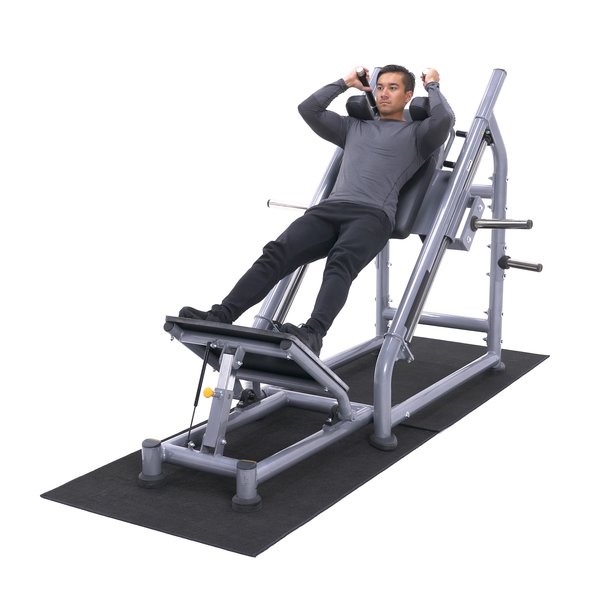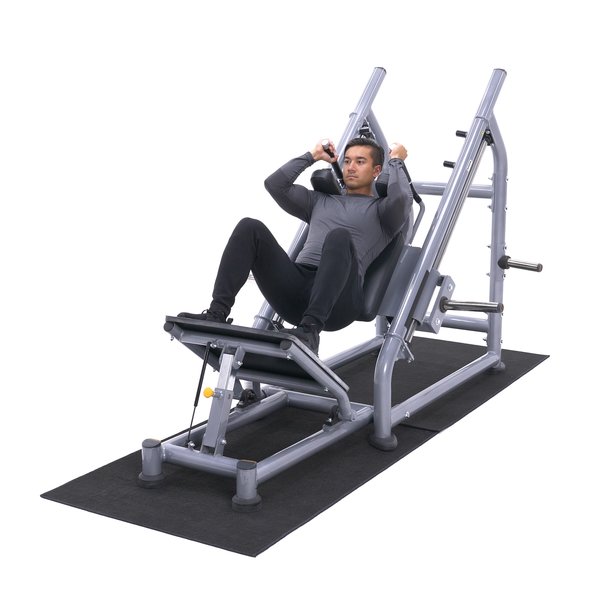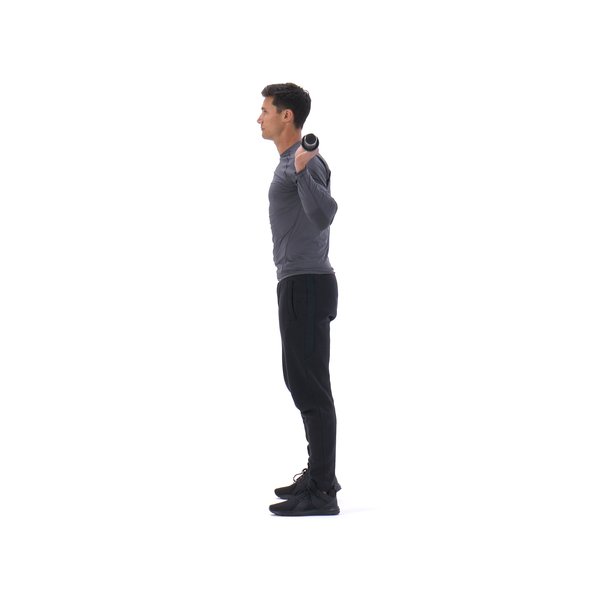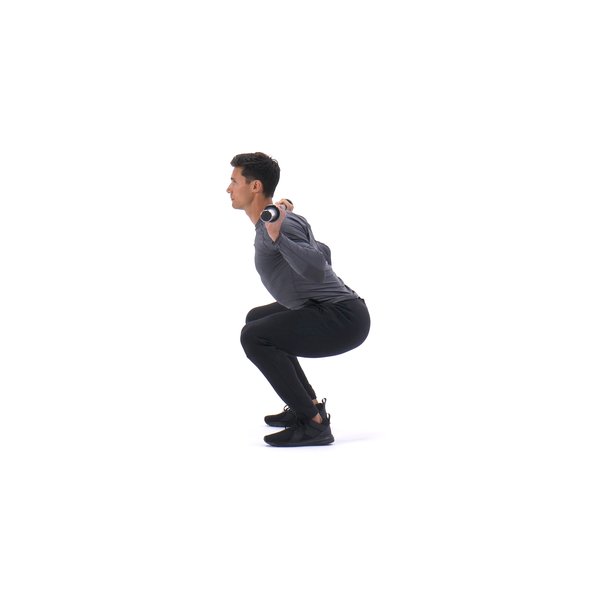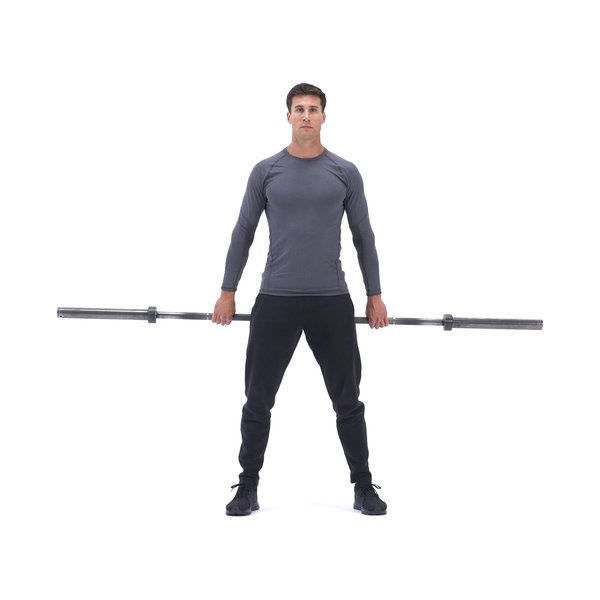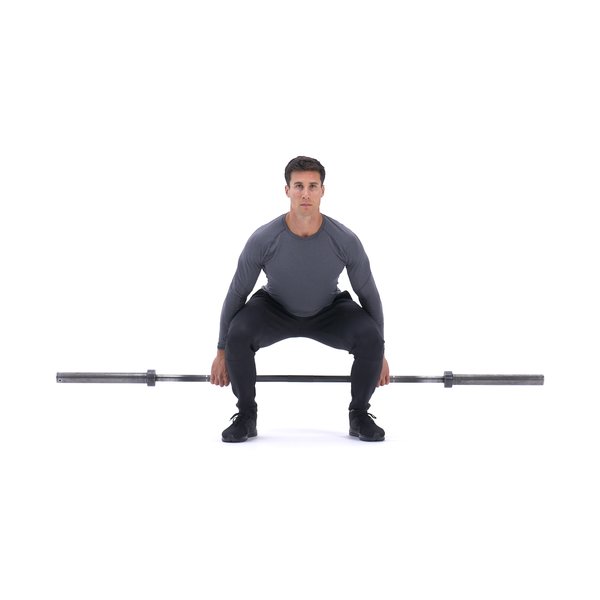Barbell front squat Images
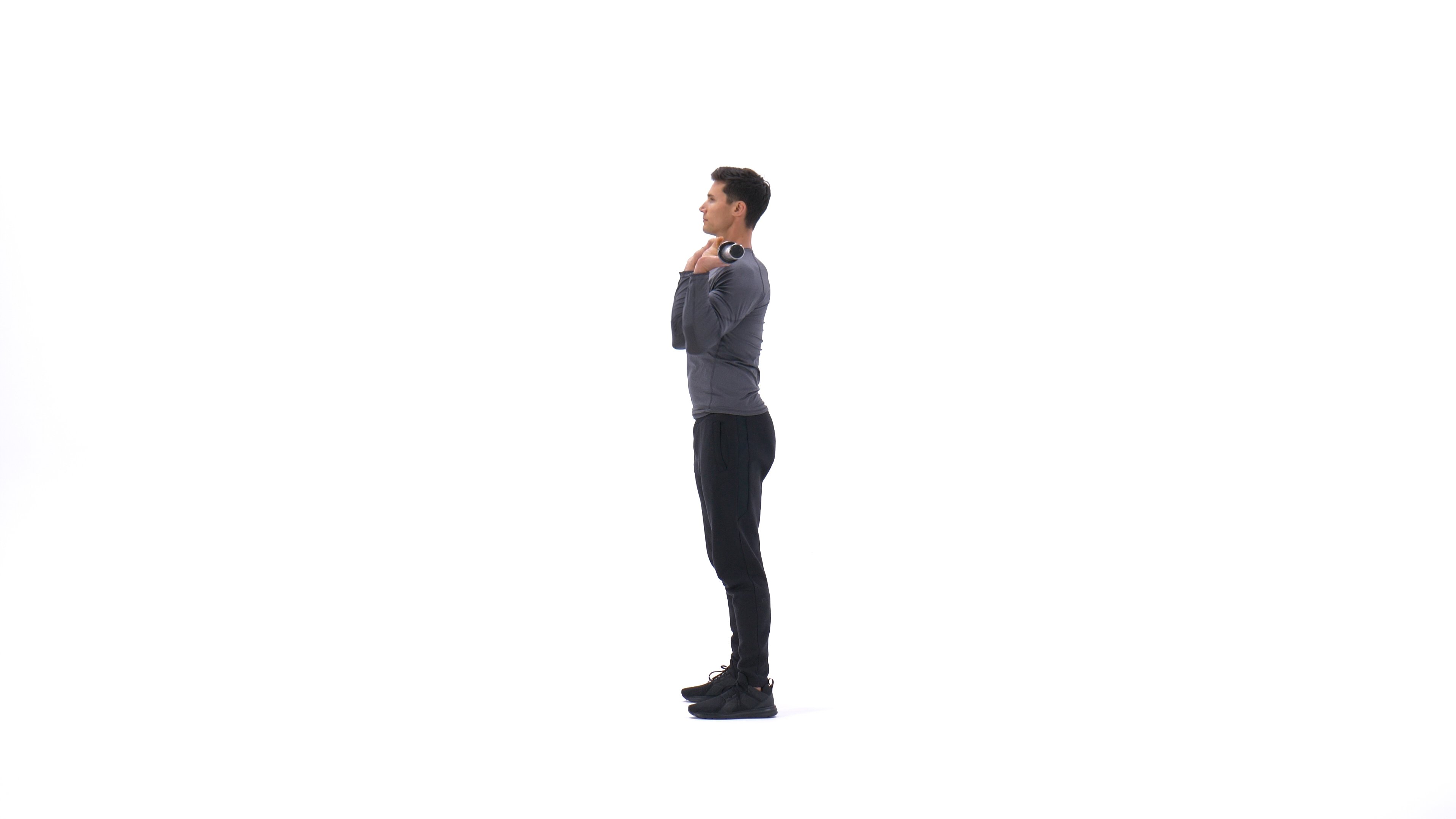
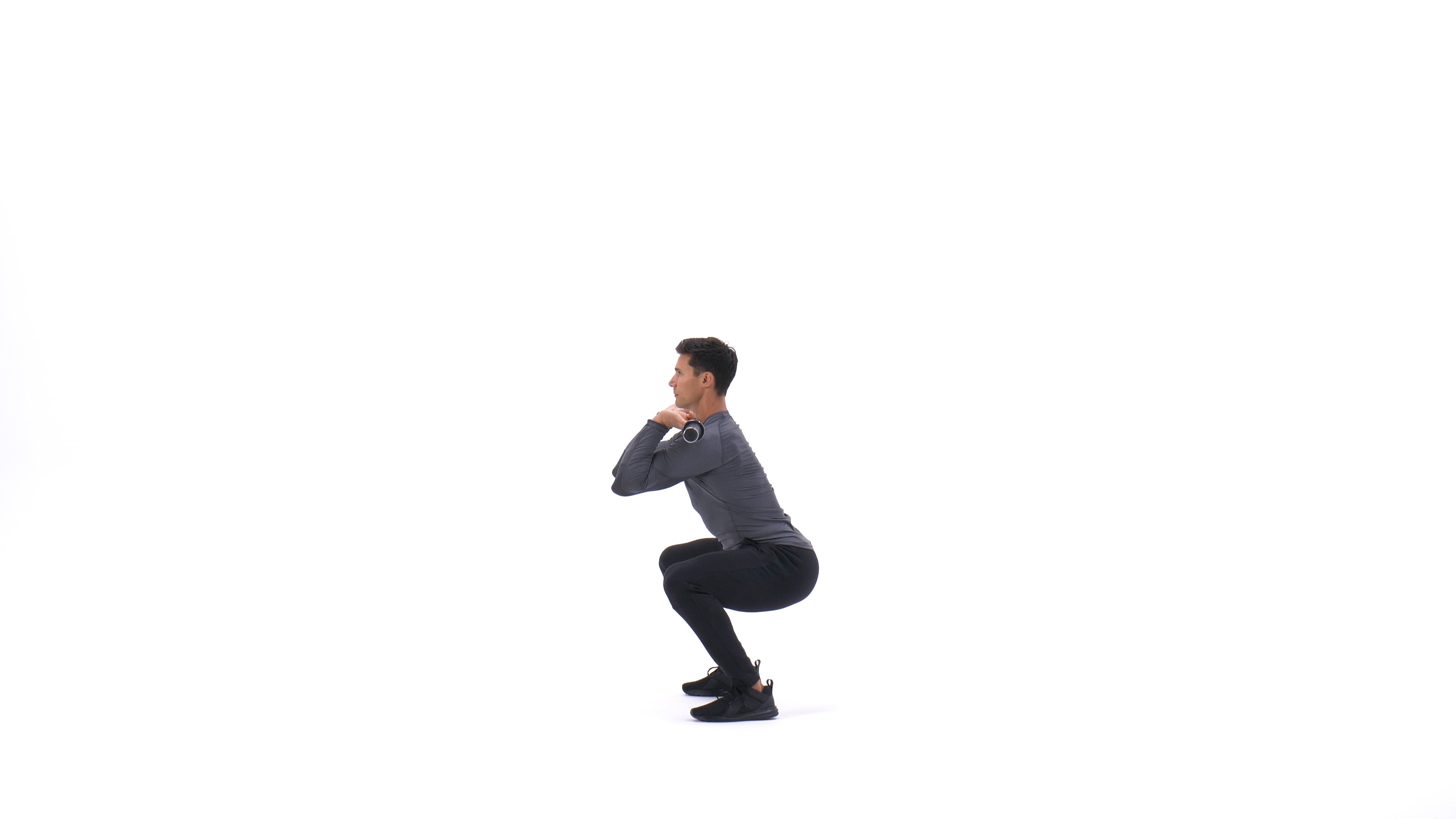
Barbell front squat Instructions
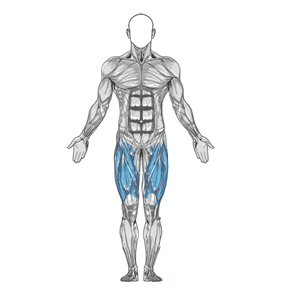
- This exercise is best performed inside a squat rack for safety purposes. To begin, first set the bar on a rack that best matches your height. Once the correct height is chosen and the bar is loaded, bring your arms up under the bar while keeping the elbows high and the upper arm slightly above parallel to the floor. Rest the bar on top of the deltoids and cross your arms while grasping the bar for total control.
- Lift the bar off the rack by first pushing with your legs and at the same time straightening your torso.
- Step away from the rack and position your legs using a shoulder width medium stance with the toes slightly pointed out. Keep your head up at all times as looking down will get you off balance and also maintain a straight back. This will be your starting position. (Note: For the purposes of this discussion we will use the medium stance described above which targets overall development; however you can choose any of the three stances described in the foot positioning section).
- Begin to slowly lower the bar by bending the knees as you maintain a straight posture with the head up. Continue down until the angle between the upper leg and the calves becomes slightly less than 90-degrees (which is the point in which the upper legs are below parallel to the floor). Inhale as you perform this portion of the movement. Tip: If you performed the exercise correctly, the front of the knees should make an imaginary straight line with the toes that is perpendicular to the front. If your knees are past that imaginary line (if they are past your toes) then you are placing undue stress on the knee and the exercise has been performed incorrectly.
- Begin to raise the bar as you exhale by pushing the floor mainly with the middle of your foot as you straighten the legs again and go back to the starting position.
- Repeat for the recommended amount of repetitions.
Caution: This is not an exercise to be taken lightly. If you have back issues, substitute it with the dumbbell squat variation or a leg press instead. If you have a healthy back, ensure perfect form and never slouch the back forward as this can cause back injury. Be cautious as well with the weight used; in case of doubt, use less weight rather than more. The front squat is a very safe exercise but only if performed properly. This version of the squat is better suited for advanced athletes.
Variations: As previously mentioned, there are various stances that can be used depending on what you want to emphasize. You can also place a small block under the heels to improve balance.




